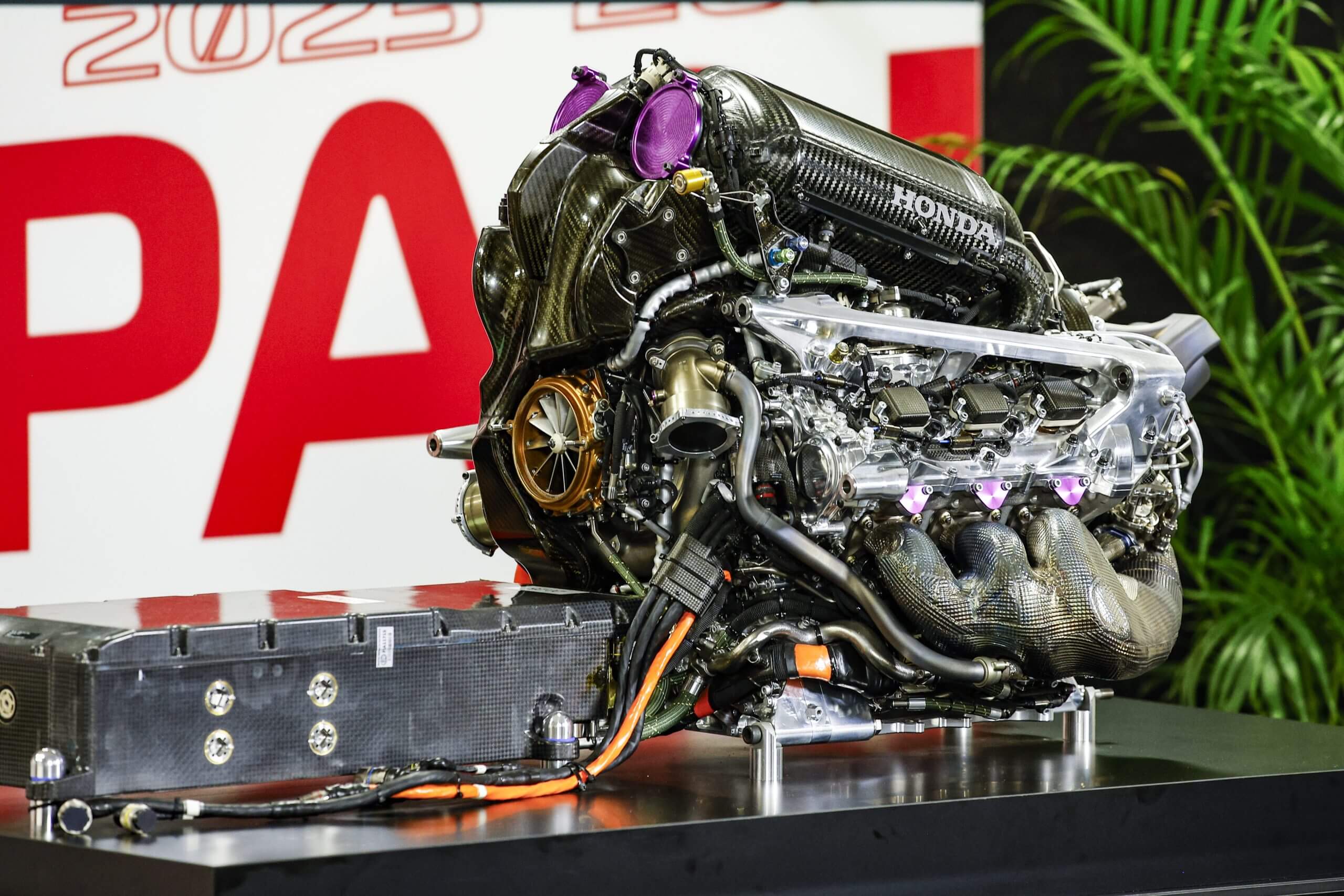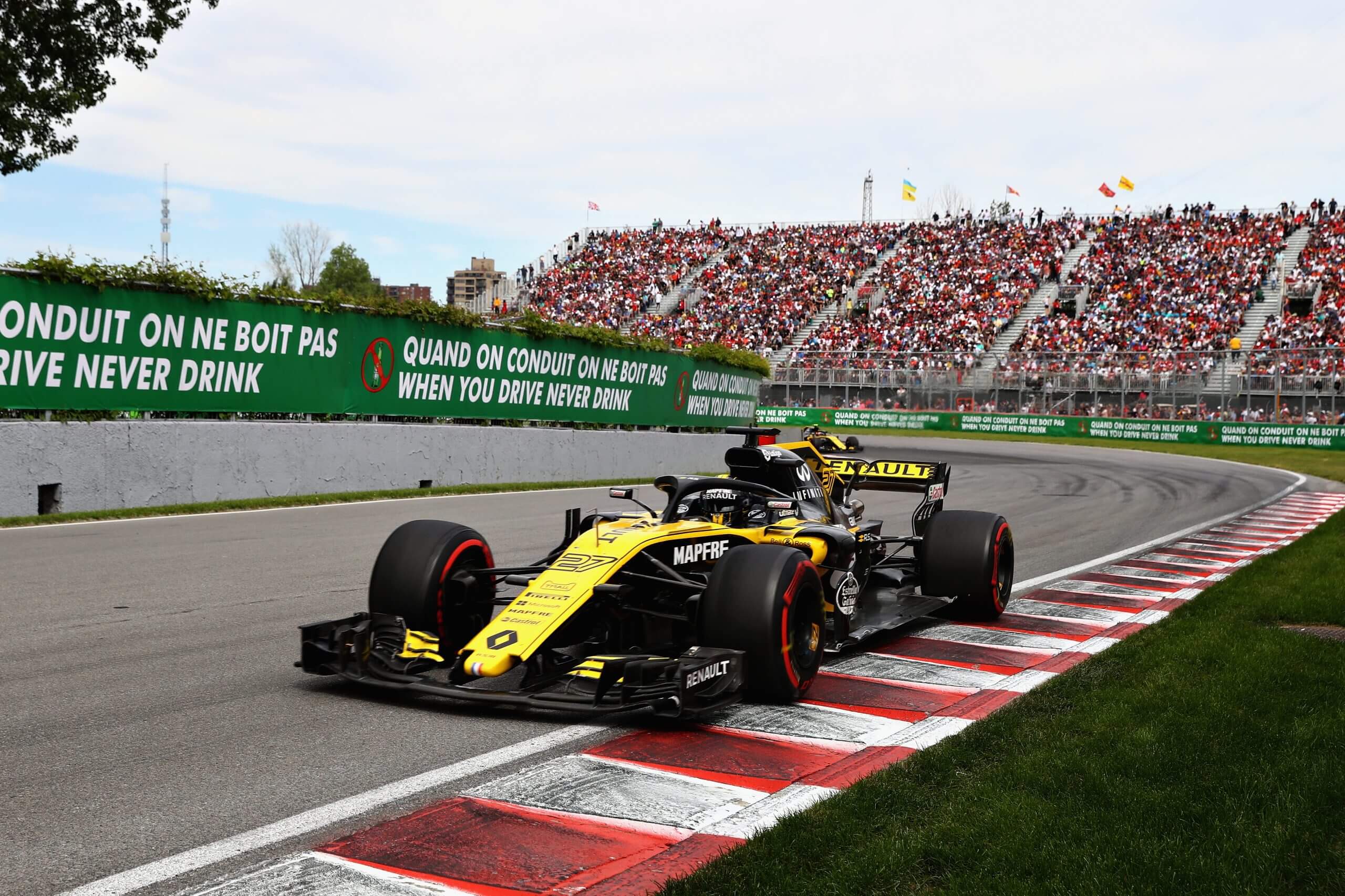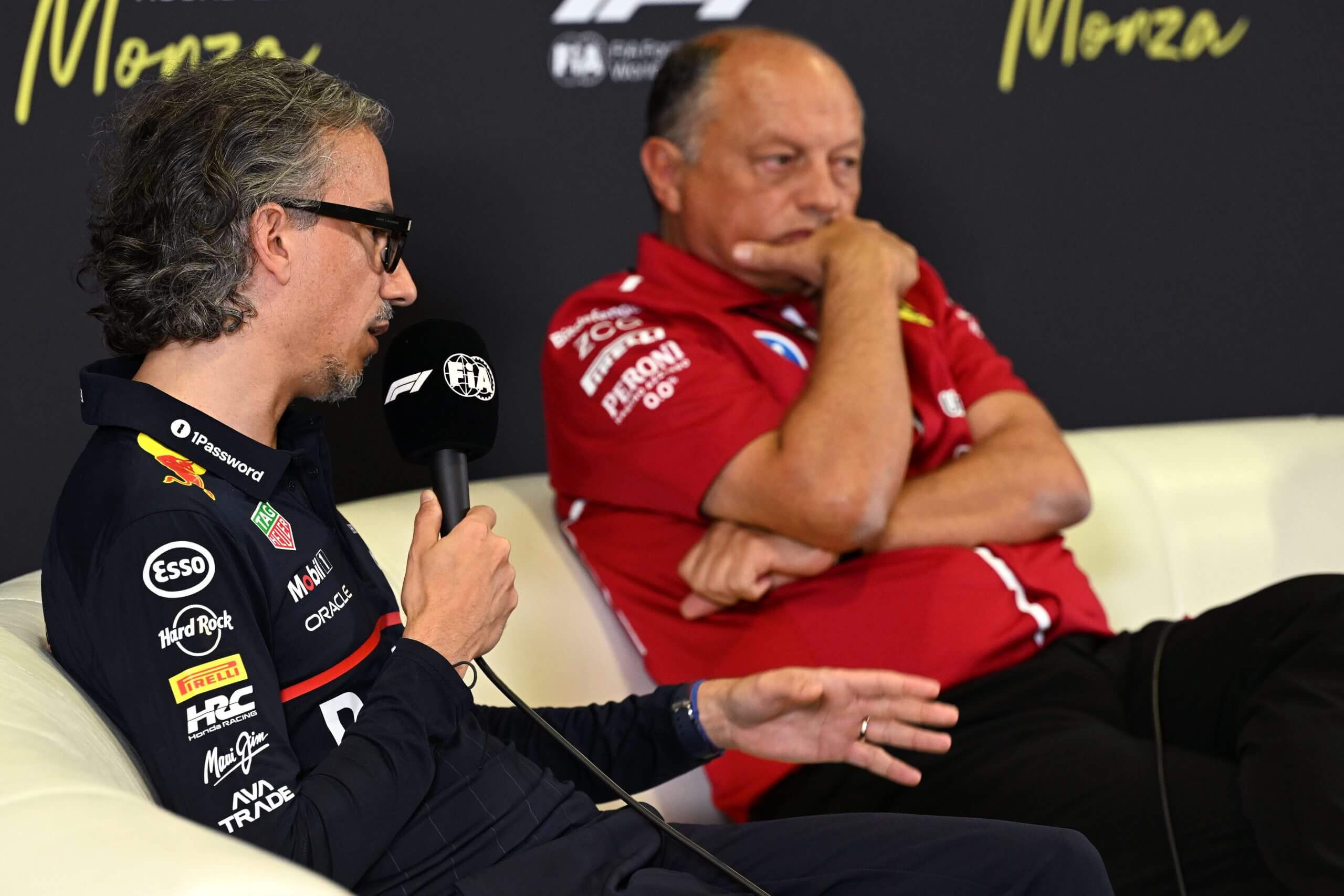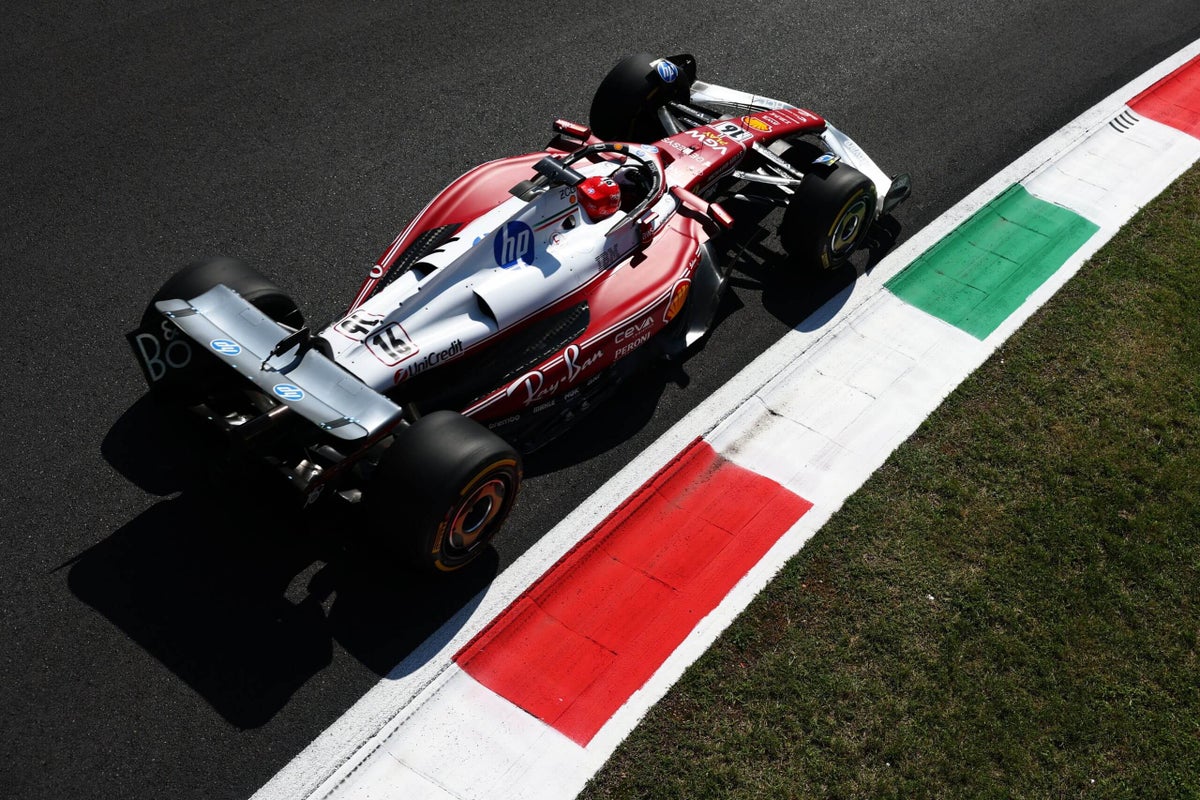This article is part of our Forever Forward series, which is showcasing the ways Formula 1 is innovating for the 2026 season.
Few things split Formula One fans like the power behind the championship’s mighty machines. Along with each political plot twist in the paddock, technological advancements cause quite a stir.
Some people want speed to rule, others prefer to see cutting-edge tech proven on the grandest stages. Screaming engine notes inspire some fans, while power units configured to promote good racing enthrall others. F1’s current engine formula encompasses the entire range of intense emotions.
In 2026, a new engine formula arrives. For the 14th time in F1 history, the sport’s governing body, the FIA, has established new rules for building the power units that will power the cars. These are also changing in their appearance and aerodynamic performance.
Essential elements of Grand Prix racing are evolving once more, which will influence the legacy of the current V6 turbo-hybrid era.
In 2014, Formula 1 introduced turbo engines to replace the lighter, screaming V8s that had dominated for eight years, following the extreme-sounding V10s used for decades. When these quieter engines debuted at the Australian Grand Prix, F1 CEO Bernie Ecclestone said he was “horrified” at the different noise. However, even with the extra weight, these engines eventually helped topple several famous F1 speed records — including the fastest-ever lap, achieved three times at Monza, most recently with Red Bull’s Max Verstappen last month.
“This generation of engines is and will remain the highest-efficiency engines on the planet,” said Red Bull team principal Laurent Mekies in September at the Italian Grand Prix.
High praise. But in F1, respect is not enough to maintain the status quo. The reinvention of key car parts has been intrinsic since the world championship began in 1950. The sport is synonymous with technological development, driven by technology and external factors that lead to differences in team performance and paddock politics.
F1’s upcoming engine overhaul draws this dynamic into focus. The successful V6 turbo hybrids are being scrapped not because of poor performance, but because their complexity initially deterred new manufacturers, forcing a compromise that prioritizes business over pure technological advancement.
The two main areas of the 2026 car design rule changes are transforming due to a single central goal from much of F1’s past decade: the ambition of Formula One Management and the FIA to expand the pool of power unit producers.
In 2020, as in 2025, there were only four in the championship: Ferrari, Mercedes, Honda and Renault. However, Honda’s commitment was wavering, and German powerhouses Audi and Porsche were considering F1 entries. But only if they could make simpler, less expensive engines.
The tremendous efficiency of the complex current engines is evident in how they cover a 190-mile grand prix distance on just 110 kilograms of fuel. Two key energy recovery systems make this possible: the MGU-H, which converts an engine’s hot exhaust gases into electrical power, and the MGU-K, which harvests energy from a car’s braking systems to be redeployed, as is common on many road cars.
Audi and Porsche (and their parent company, Volkswagen) had wanted the MGU-H removed as a condition of either manufacturer entering F1 in 2021, the last time the engine rules were re-enshrined.

A Honda power unit from 2023. (Gongora / NurPhoto via Getty Images)
The MGU-H also had little relevance to road car technology, since it was too expensive and over-engineered for everyday use. It’s an intricate and costly system, even compared to the MGU-K. Audi and Porsche also feared it would take them a long time to catch up with the successful systems deployed by existing manufacturers, such as Ferrari or Mercedes.
However, F1 and the FIA failed to secure the solid entry guarantees they wanted from these firms, even if they agreed to remove the costly and complicated tech by 2021. Ultimately, the tech remained, and the current engine class held.
However, dropping the MGU-H remained a central target of the 2026 rules cycle now on the horizon, in addition to introducing sustainable fuels. In 2026, the new engines will fully adopt that technology. And, with the MGU-H removed, the electric power boost output from the MGU-K will increase significantly.
Honda is returning to F1 in 2026, as the new 2026 rules on hybrids and sustainable fuels now align with its long-term clean-energy goals, leading it to return as Aston Martin’s engine partner.
“The biggest change in the technical regulations for 2026 is the power unit,” Bob Bell, executive director at Aston Martin, said in May. “The headline figure is that 50 percent of the power will be generated from the internal combustion engine and 50 percent from the battery. The ratio at the moment (in 2025) is about 80:20.”
Audi had seen enough to join, and finally announced its F1 entry at the 2022 Belgian GP. Porsche’s mooted collaboration with Red Bull fell apart just weeks later. However, Red Bull later entered into a partnership deal with Ford, as it began to develop its own engine business.
But F1 is losing Alpine’s Renault power in 2026, when the team will become a Mercedes customer. The sport’s manufacturer pool will therefore only slightly swell from 2020’s four, at least until Cadillac starts building its own engines in 2029.

Renault (now Alpine) has struggled across F1’s V6 turbo hybrid engine era, including here at the 2018 Canadian GP. (Mark Thompson / Getty Images)
There is a certain irony in that development from Renault. In the early 2010s, the risk of losing the French manufacturer led to the creation of the current power unit formula. Renault was then pushing for F1 to use engines that better reflected those in road cars.
In response, F1 was initially going to replace the V8s with engines known as inline-fours. These would also have a significant focus on fuel efficiency and electrification, which eventually arrived with the introduction of the V6 turbos. However, Ecclestone led opposition to their use, and Renault was ultimately convinced that the V6s would achieve its aims and so stuck around.
The issue persisted among fans, nonetheless. An official F1 fan survey from 2017 found that almost 50 percent of 216,000 fans polled wanted the V8s back.
“The perception is probably completely different between 2014 and today,” Ferrari team boss Fred Vasseur said alongside Mekies at Monza.
However, the 2014 engines could be slotted straight into the existing car shapes without issue. In 2026, the new chassis rules will be revised due to the changes in engine design.
The new cars will use active aerodynamics to a much greater extent. They will generate downforce with large wing shapes standing tall in the corners and automatically shed drag when these slim down to go faster along straights.
All this change has caused concern among competitors, some of which have been simulating the new designs for over two years. The rules behind them were only officially finalized in June 2024.
The drivers fear the cars will run out of electrical power on long straights, requiring them to slow down and replenish the battery. And while the lower drag configuration should mean higher top speeds (even if these were only briefly reached) than the current 230mph at certain tracks, there are concerns that cornering speeds could drop significantly
The specter of changes in 2014 looms large in F1’s collective memory. Thanks to its initially unbeatable V6 turbo hybrid technology, Mercedes won eight consecutive constructors’ championships — but much of this was thanks to the German manufacturer’s early proficiency in MGU-H design. Other engine builders caught up, and some parity has been restored.
“Today, we have a huge convergence of performance,” Vasseur said in September. “We have everybody in the ballpark. That was not the case in 2014. It’s a good thing in F1 that we have this kind of continuity in development and convergence of performance.
“The technology has reached a very high point with this engine. But we have to keep the cost under control and avoid arrogance. It’s not because we’re successful today that we don’t have to be careful about keeping things under control.”
This refers not only to the new development costs and green technology steps in the 2026 engines, but also to mechanisms introduced by the FIA to prevent one manufacturer from dominating.

Laurent Mekies (left) and Fred Vasseur at the FIA news conference at the 2025 Italian GP (Mark Sutton/Formula 1/Getty Images)
F1’s cost cap (introduced in 2021) also applies to engine builders, and there is a specific rule area aimed at helping those who find themselves behind in 2026 to catch up, with additional resources released after the fifth race each year.
Intense interest already surrounds the F1 paddock about what will follow technology that hasn’t even yet hit the track.
As the 2025 season commenced, an idea to abandon the new designs after just a few seasons and return to V10 engines powered by sustainable fuels was championed by FIA President Mohammed Ben Sulayem.
This idea was dropped. It was not considered realistic to abandon engines that have not even run. However, Ben Sulayem then led another push to return to V8 power in 2029, but ultimately called it off, as the plan lacked sufficient manufacturer support.
The uncertainty in global markets — fueled in large part by United States President Donald Trump’s tariff policies, as well as financial strife in the automotive sphere more generally — means manufacturers cannot afford to develop two engine projects simultaneously.
It seems that the 2026 designs will be used for the planned five-year term, leaving just seven grands prix for the existing engines.
“As engineers, it still amazes us. To get above 50 percent efficiency on an ICE (internal combustion engine) plus hybrid is incredible,” Mekies said of the technological strengths of the current engines.
“They are amazing. They gave us great racing. We probably all underestimated the level of complexity they would eventually reach, but that’s also what Formula 1 is about. We now have another huge challenge with the 2026 regs. That’s inciting lots of speculation again — (about) the sustainable fuel, the energy balance. But that’s what F1 is here for.”
F1 reinvention won’t stop. And technology will always power the cars. However, as this era has highlighted, the engine debate also significantly influences F1’s politics.
The Forever Forward series is part of a partnership with SAP. The Athletic maintains full editorial independence. Partners have no control over or input into the reporting or editing process and do not review stories before publication.
(Top photo: Clive Rose/Getty Images)

